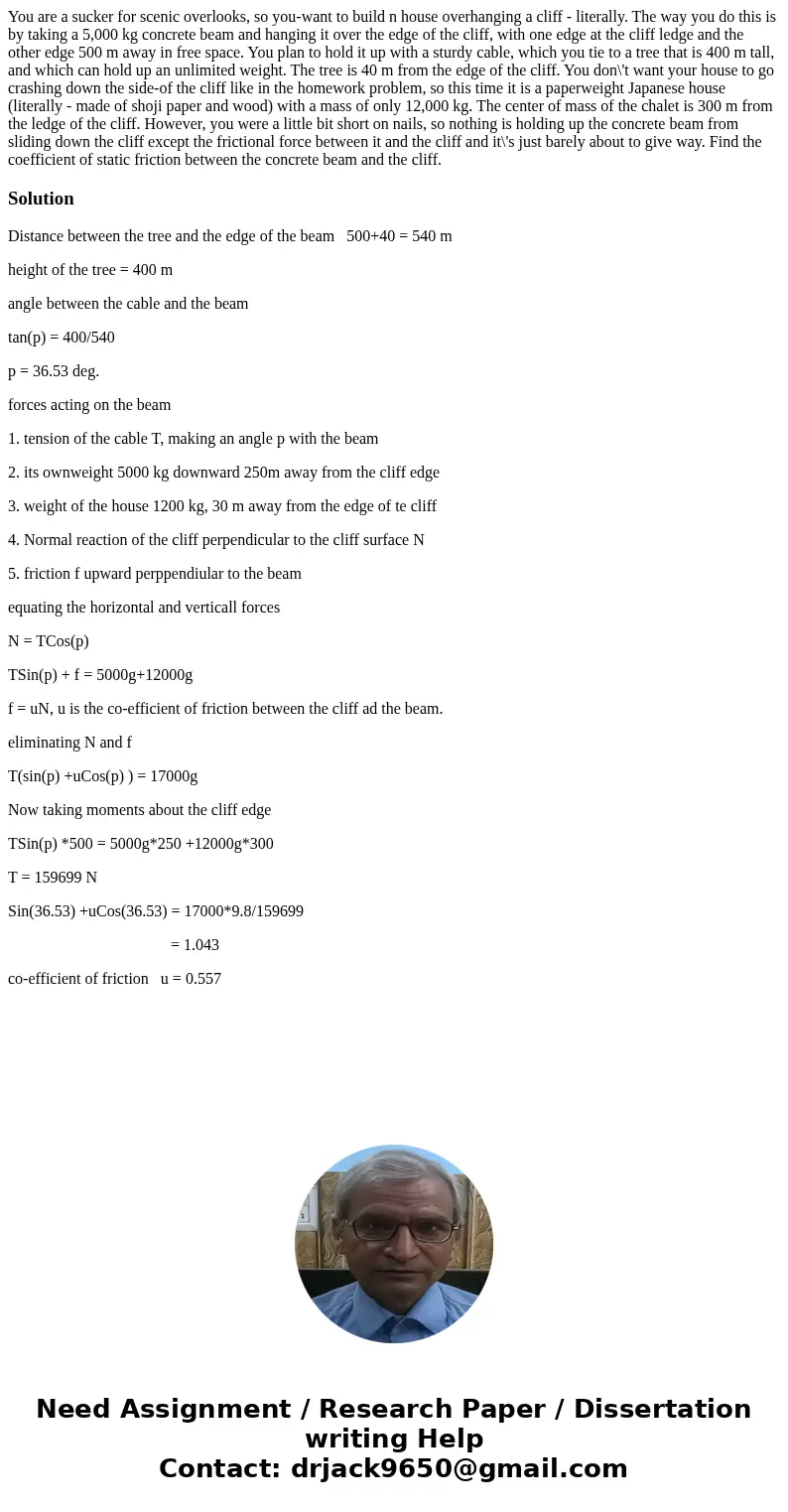You are a sucker for scenic overlooks, so you-want to build n house overhanging a cliff - literally. The way you do this is by taking a 5,000 kg concrete beam and hanging it over the edge of the cliff, with one edge at the cliff ledge and the other edge 500 m away in free space. You plan to hold it up with a sturdy cable, which you tie to a tree that is 400 m tall, and which can hold up an unlimited weight. The tree is 40 m from the edge of the cliff. You don\'t want your house to go crashing down the side-of the cliff like in the homework problem, so this time it is a paperweight Japanese house (literally - made of shoji paper and wood) with a mass of only 12,000 kg. The center of mass of the chalet is 300 m from the ledge of the cliff. However, you were a little bit short on nails, so nothing is holding up the concrete beam from sliding down the cliff except the frictional force between it and the cliff and it\'s just barely about to give way. Find the coefficient of static friction between the concrete beam and the cliff.
Distance between the tree and the edge of the beam 500+40 = 540 m
height of the tree = 400 m
angle between the cable and the beam
tan(p) = 400/540
p = 36.53 deg.
forces acting on the beam
1. tension of the cable T, making an angle p with the beam
2. its ownweight 5000 kg downward 250m away from the cliff edge
3. weight of the house 1200 kg, 30 m away from the edge of te cliff
4. Normal reaction of the cliff perpendicular to the cliff surface N
5. friction f upward perppendiular to the beam
equating the horizontal and verticall forces
N = TCos(p)
TSin(p) + f = 5000g+12000g
f = uN, u is the co-efficient of friction between the cliff ad the beam.
eliminating N and f
T(sin(p) +uCos(p) ) = 17000g
Now taking moments about the cliff edge
TSin(p) *500 = 5000g*250 +12000g*300
T = 159699 N
Sin(36.53) +uCos(36.53) = 17000*9.8/159699
= 1.043
co-efficient of friction u = 0.557

 Homework Sourse
Homework Sourse